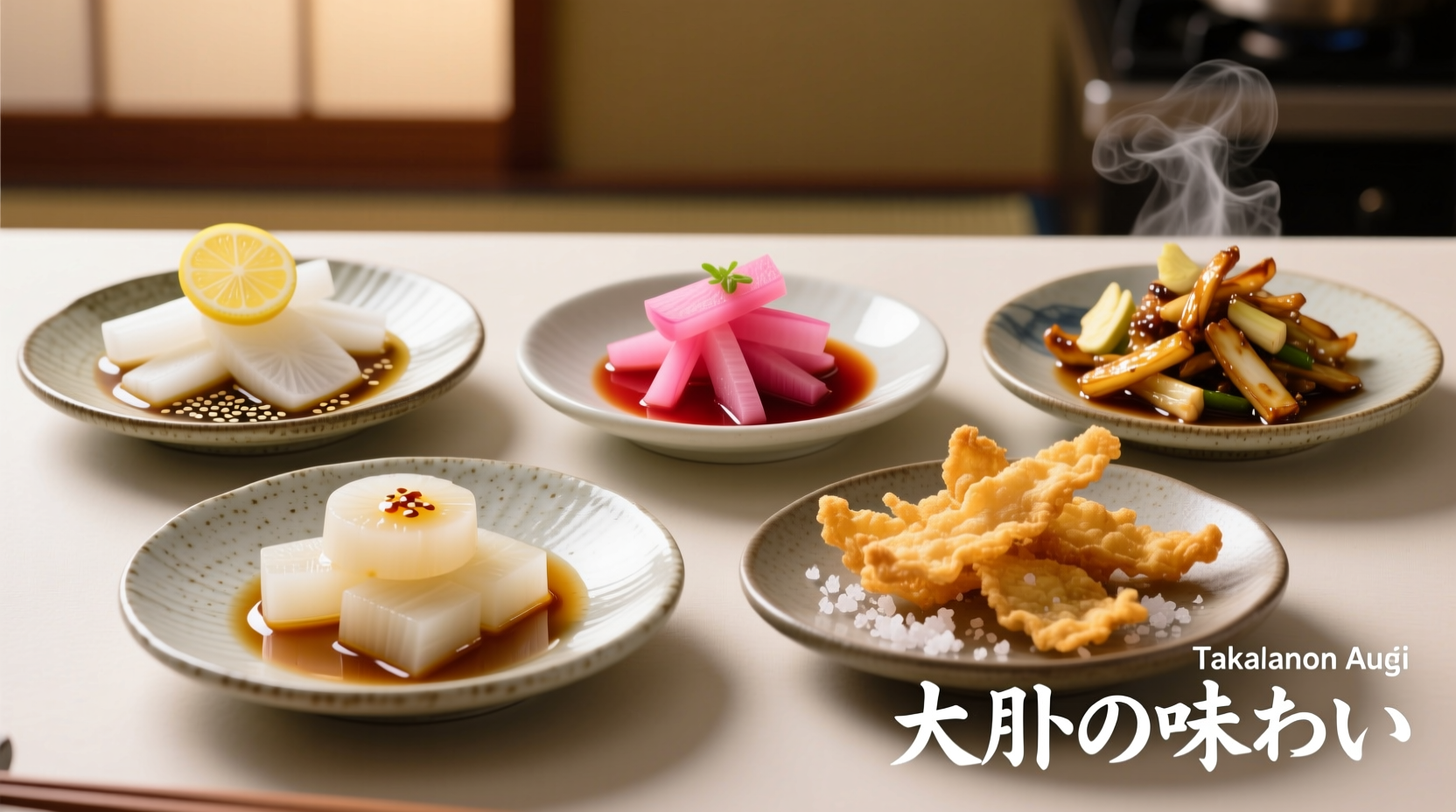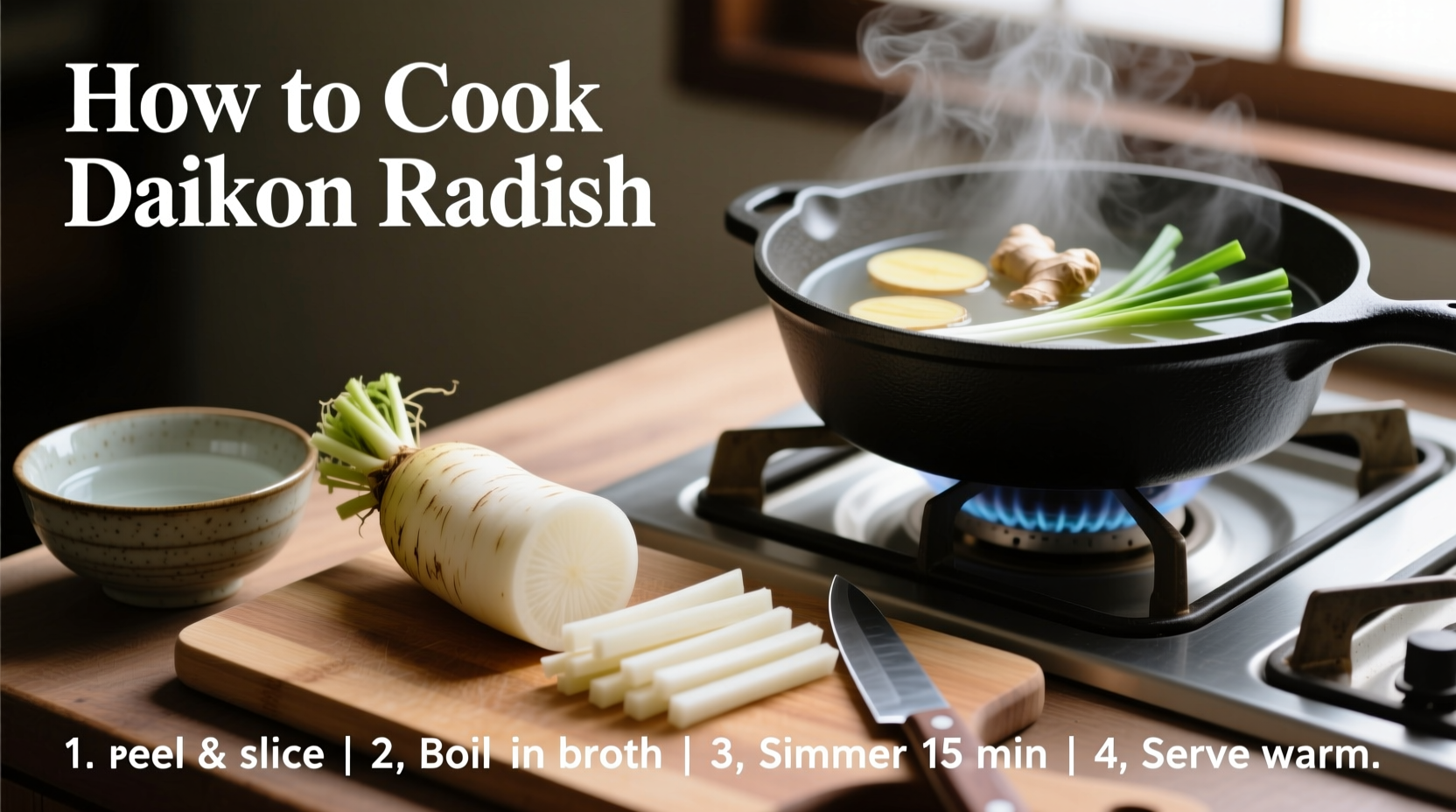Daikon radish transforms from crisp and mildly peppery when raw to tender and subtly sweet when cooked. The best cooking methods include simmering for 15-20 minutes until fork-tender, stir-frying for 5-7 minutes for crisp-tender results, or roasting at 400°F (200°C) for 25-30 minutes to caramelize natural sugars. Properly cooked daikon absorbs flavors beautifully while maintaining a satisfying texture that works in soups, stir-fries, and side dishes across Japanese, Korean, and Chinese cuisines.
Why Daikon Deserves a Spot in Your Kitchen
Often called “white carrot” or “Japanese radish,” daikon (Raphanus sativus var. longipinnatus) offers remarkable culinary versatility. This large, white root vegetable contains just 18 calories per 100g while delivering 1.6g of fiber and significant vitamin C, according to USDA FoodData Central. Unlike its smaller red counterparts, daikon’s mild flavor profile makes it ideal for absorbing seasonings while contributing unique texture to dishes.
Selecting and Storing Daikon Like a Pro
Your cooking success starts with proper selection. Choose firm, heavy-for-their-size daikons with smooth, unblemished skin. Avoid specimens with soft spots, cracks, or visible root hairs, which indicate age. The FDA recommends storing daikon roots separately from their leafy greens to maximize freshness. Place unwashed daikon in a perforated plastic bag in your refrigerator’s crisper drawer where it will stay fresh for 2-3 weeks.
Preparation Techniques That Make a Difference
Peeling isn’t always necessary – young, tender daikon can be scrubbed clean and used unpeeled. For mature specimens, use a vegetable peeler to remove the thin outer layer. When cutting, remember that daikon’s cellular structure affects texture:
| Cutting Direction | Texture Result | Best For |
|---|---|---|
| With the grain (lengthwise) | Firmer, holds shape | Stir-fries, pickling |
| Against the grain (crosswise) | Softer, absorbs flavors | Simmered dishes, soups |
Soaking sliced daikon in cold salted water for 15 minutes reduces any potential bitterness while preserving crunch – a technique documented in traditional Japanese culinary practices dating back to the Edo period.
Mastering Essential Cooking Methods
Understanding how heat transforms daikon’s natural enzymes helps you achieve perfect results every time. The enzyme myrosinase, responsible for daikon’s characteristic peppery note, breaks down at temperatures above 140°F (60°C), explaining why cooked daikon tastes sweeter than raw.
Simmering: The Foundation Technique
Simmering remains the most versatile cooking method for daikon. Follow these steps for restaurant-quality results:
- Peel and cut daikon into 1-inch cubes or wedges
- Place in cold water, bring to gentle simmer
- Add 1 tablespoon rice vinegar to prevent discoloration
- Cook 15-20 minutes until fork-tender but not mushy
- Finish with dashi broth, soy sauce, and mirin for authentic Japanese flavor
Stir-Frying: Quick and Flavorful
For crisp-tender results in minutes:
- Heat wok or skillet over high heat until smoking
- Add neutral oil with high smoke point (peanut or avocado)
- Cook daikon matchsticks for 3-4 minutes
- Add aromatics (garlic, ginger) in last 30 seconds
- Toss with light soy sauce and sesame oil before serving

Roasting: Unlocking Natural Sweetness
Roasting concentrates daikon’s natural sugars through caramelization. Toss 1-inch cubes with olive oil, salt, and pepper. Spread on parchment-lined baking sheet and roast at 400°F (200°C) for 25-30 minutes, flipping halfway, until golden brown at the edges. This method works particularly well when combining daikon with other root vegetables.
Flavor Pairings That Elevate Your Dish
Daikon’s neutral profile makes it incredibly adaptable. Consider these pairing principles:
- Asian-inspired: Soy sauce, mirin, rice vinegar, sesame oil, bonito flakes
- Mediterranean: Lemon zest, olive oil, rosemary, garlic
- Spicy variations: Gochujang, sambal, fresh chilies (add after cooking to preserve heat)
- Umami boosters: Dried shiitake mushrooms, kombu, miso paste
For authentic Japanese preparation, the National Institute of Food and Agriculture documents that daikon often appears in oden (simmered dishes) where it absorbs dashi broth flavors over several hours. In Korean cuisine, it features prominently in kimchi and baechu-kimchi as both ingredient and fermentation vessel.
Avoid These Common Daikon Cooking Mistakes
Even experienced cooks encounter these pitfalls:
- Overcooking: Results in mushy texture that falls apart in dishes
- Under-seasoning: Daikon needs slightly more seasoning than other root vegetables
- Improper cutting: Uneven pieces cook inconsistently
- Adding salt too early: Draw out moisture and prevent proper browning when roasting
Simple Recipe: Miso-Glazed Roasted Daikon
This 30-minute side dish showcases daikon’s transformation from humble root to star ingredient:
- Peel and cut 1 large daikon into 1-inch cubes
- Toss with 2 tbsp avocado oil, 1 tsp salt, and 1/2 tsp black pepper
- Roast at 400°F (200°C) for 20 minutes
- Mix 2 tbsp white miso, 1 tbsp maple syrup, and 1 tbsp water
- Coat roasted daikon with miso mixture and return to oven for 5-7 minutes
- Garnish with toasted sesame seeds and scallions before serving
When to Choose Different Cooking Methods
Understanding context boundaries ensures perfect results:
- Simmering works best: When creating soups, stews, or dishes requiring daikon to absorb broth flavors
- Stir-frying shines: For quick weeknight meals where texture contrast matters
- Roasting excels: When serving as standalone side dish or with other roasted vegetables
- Pickling ideal for: Adding brightness to rich dishes or creating condiments
According to culinary research from the University of California’s Agriculture and Natural Resources department, daikon’s enzymatic activity peaks at different temperatures, explaining why certain cooking methods work better for specific applications. This scientific understanding helps home cooks achieve restaurant-quality results consistently.
Expanding Your Daikon Repertoire
Once comfortable with basic techniques, experiment with these advanced applications:
- Create daikon “noodles” using a spiralizer for low-carb alternatives
- Make daikon ponzu by steeping citrus-infused soy sauce with daikon
- Use large daikon rounds as edible “plates” for Asian-inspired appetizers
- Incorporate grated daikon into fritters or pancakes for moisture and flavor











 浙公网安备
33010002000092号
浙公网安备
33010002000092号 浙B2-20120091-4
浙B2-20120091-4